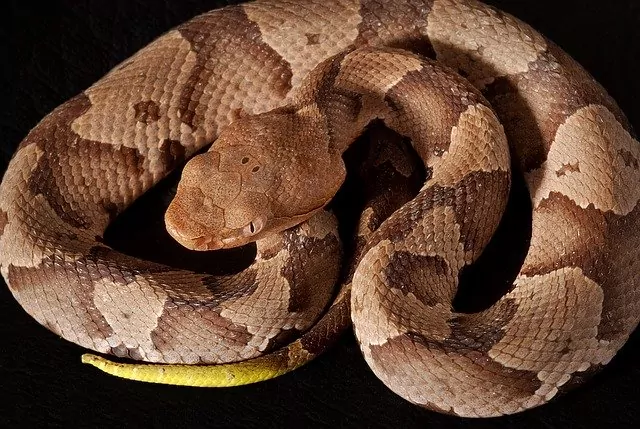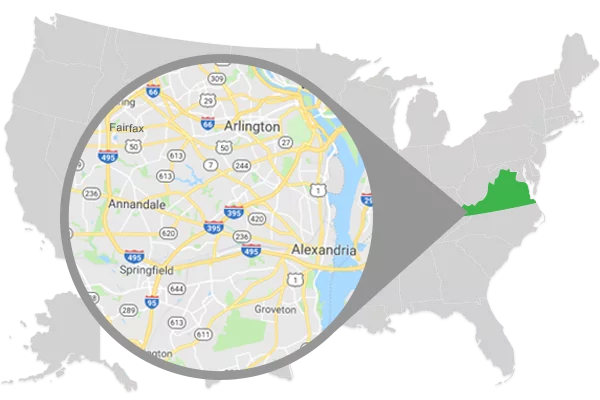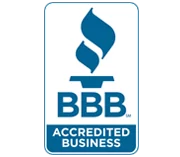What to know about these snakes and snake removal in Northern Virginia
In Virginia, there are three venomous snake species, northern copperheads, cottonmouths and timber rattlesnakes. Northern copperheads are the least venomous out of the three venomous species found in Northern Virginia, but they still pose a dangerous threat to animals and even people. While their venom is not as potent as some other venomous snakes, copperheads are the species of snake most likely to bite humans in the state of Virginia. Northern copperheads have two mating seasons. One in the spring from April through May and the other in the late summer and early fall in August through October. Some snakes give birth to eggs that hatch months later but copperheads are some of the few species of snakes that have a live birth. The snake babies develop inside of their mother and are not born as eggs. Snakes that lay eggs are called oviparous snakes and snakes that have a live birth are called viviparous snakes. Copperheads have a gestational period of three to nine months and a female snake can give birth to anywhere from two to ten baby snakes, with larger copperheads being able to deliver larger broods. Once the mother snake gives birth, she doesn’t provide care for her young and they must survive independently.
What is a copperhead and how
to identify them?
There are five different subspecies of copperhead snakes found in the United States, the northern copperhead, northwestern, southern and two southwestern subspecies of copperhead. The Northern copperhead can be found all over Northern Virginia. Copperheads are medium-sized snakes about two to three feet in length. The females are longer than the males but the males have longer tails. They have thick, muscular bodies with ridged scales, triangular-shaped unmarked heads and vertical-shaped pupils with red, tan or reddish-brown irises.

Their bodies can be copper-colored, tan or light brown and they have crossbanding patterns on them. They have copper-colored heads with hourglass shapes on them. Copperheads are pit vipers and can sense heat from these pits that are between their eyes and nostrils. These sensors allow them to detect the difference in temperatures and strike at potential prey.
Pregnant copperheads are called gravid snakes and give birth to their young with only 10 to 25 percent of them able to survive the winter and make it to adulthood. Baby copperheads are significantly smaller than adults with lighter coloring and the tips of their tails are bright yellow. Copperheads are semi-social snakes meaning they hunt on their own but they live with other snakes even of other species and hibernate together in the same den year after year. An interesting fact about baby copperheads is that unlike their adult counterparts, they lack muscle control. With less muscle control than adults, they have no way of letting go of things they inject venom into, so they will continue to inject venom until they are removed. While they are smaller than adults, their bites can be just as powerful and potent if not worse.The venom in baby copperheads is also believed to be more concentrated than the venom of adult copperheads but the baby snakes with their shorter fangs may have more difficulty injecting it into victims.
Where can you find copperheads in Fairfax and Northern Virginia?
Copperheads live in both land and semi aquatic ecosystems but can be found most often in wetlands, fields and wooded areas. They enjoy basking in the sun and swimming in water sources. Many species of snakes are not used to adapting to people overtaking their environments but copperheads thrive virtually anywhere, often choosing strange locations for their home. Copperheads prefer areas with densely dispersed rocks and can find shelter most anywhere including abandoned buildings, stone walls and brush piles. Since copperheads live almost anywhere, it can sometimes be difficult to know whether you have one living near you or your home. It is important to be mindful of copperheads and know their locations to prevent them from biting you or members of your household.
Why and when will copperheads bite?
Copperheads are carnivorous reptiles and will hunt in the night. They use their fangs primarily to hunt for their prey and secondarily to protect themselves. Their sharp fangs are used to inject their victims with a hemolytic venom that breaks down red blood cells. The size of the snake’s fangs directly correlates with the size of the snake, so if it is a smaller snake, its fangs will be smaller than a larger snake that will possess longer fangs. The copperheads have between five and seven sets of replacement fangs that will replace old ones throughout their life. Copperheads bite either when they feel threatened or if they are touched or stepped on for the most part they are timid and will stay away from people. Copperhead bites can even happen quickly and quietly and are rarely fatal to humans because of the type of venom and the care available. If you think you have been bit by a copperhead snake, it is crucial to seek medical attention to ensure the correct measures are taken. If left untreated, the likelihood of suffering a fatality increases.
What can I do?
If you happen to see a copperhead snake, it is important to not approach it or try to pick it up or move it. Be sure to avoid making any sudden movements that might scare it and tempt it to bite. It is also recommended to keep lawns cut short and avoid making any piles in the yard, such as piles of leaves where the snake could burrow. If a copperhead snake is in your home or on your property it is suggested to hire a wildlife removal service with trained snake removal professionals who are skilled at identifying snake species and appropriately and safely removing the snake. No one should ever attempt snake removal on their own and people should never attempt to kill a copperhead snake. Since copperheads strike and bite when they are threatened, attempting to kill the snake will definitely be an open invitation for the snake to attack the person back.
At Summit, we conduct snake surveys. During these surveys, a snake removal technician will determine what is attracting the snake to the property, if there is a nest, what the food source is and if there are entry points in the home. The goal of the snake survey is to locate the snake and remove it from the property. For more information on copperheads and snake removal in Fairfax and other parts of Northern Virginia or to schedule a snake survey, for any snake problem you are having, contact us today.












